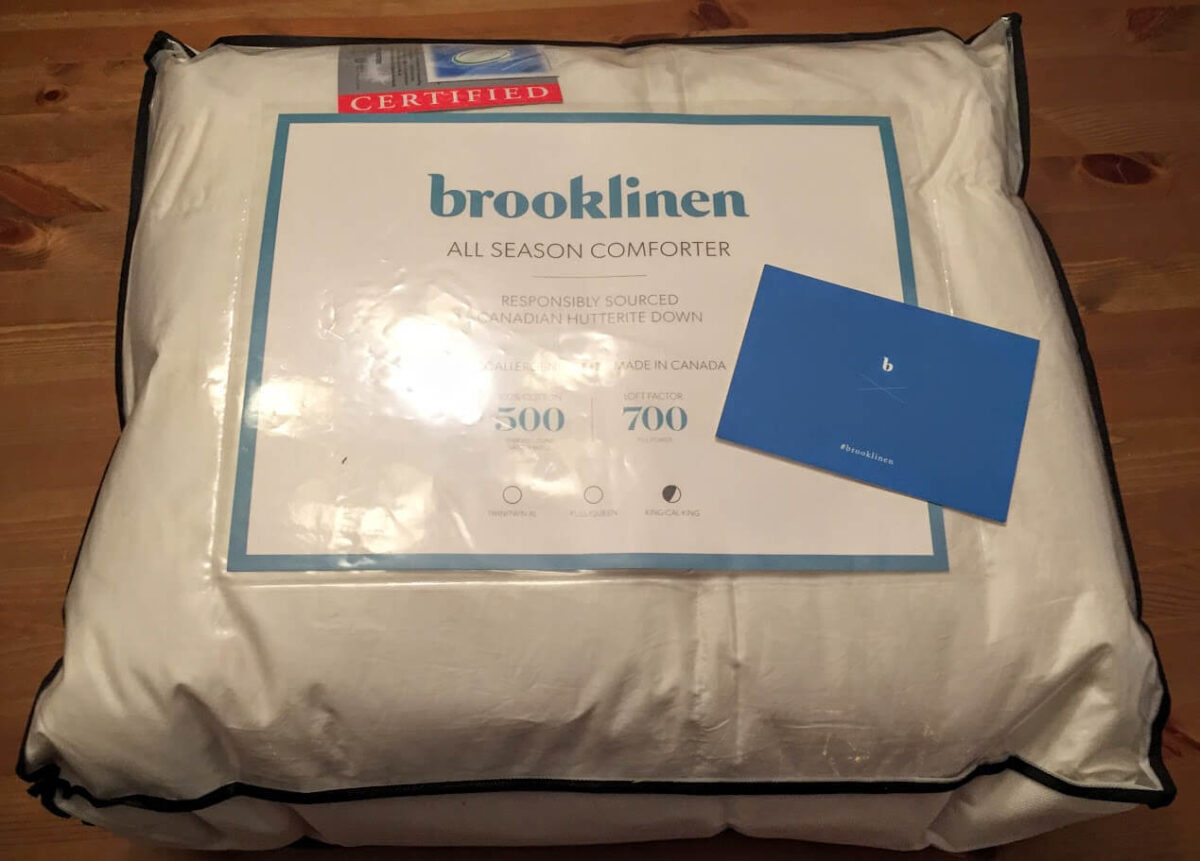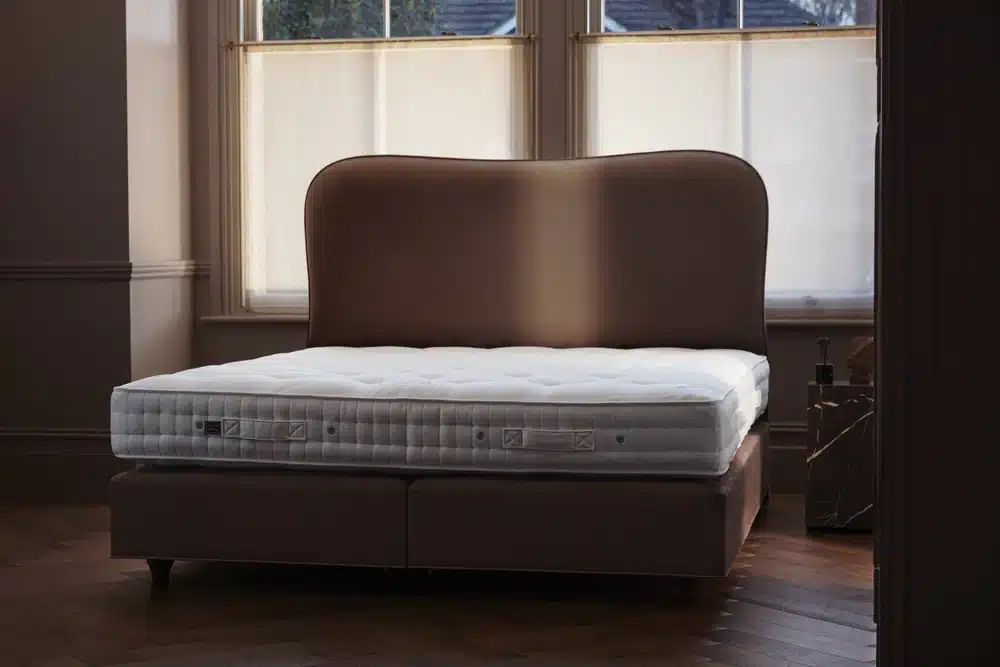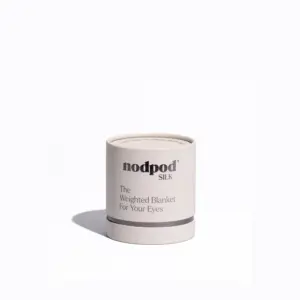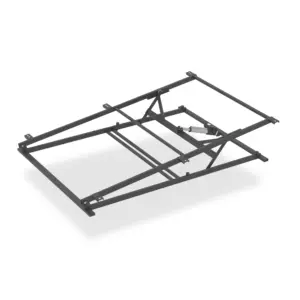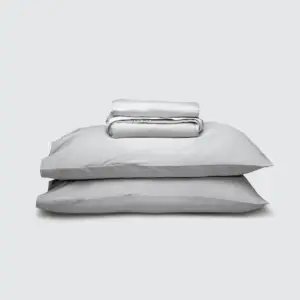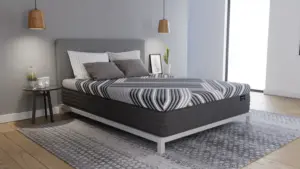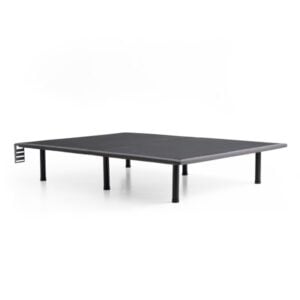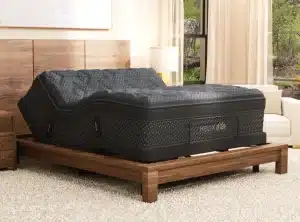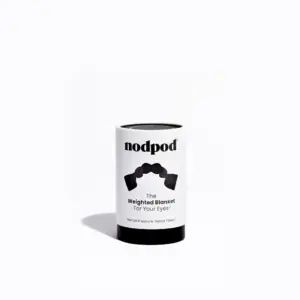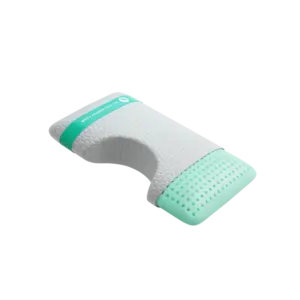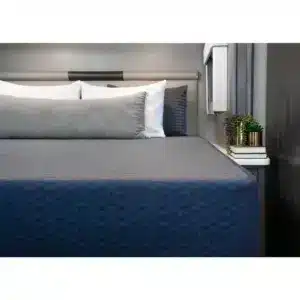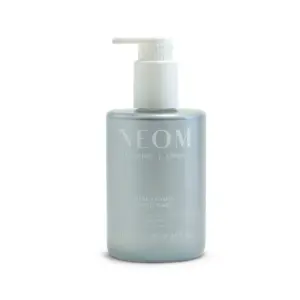Duvet insert and comforter guide
A comforter also called a duvet insert is a quilted blanket filled with down, synthetic fibers, wool, or cotton. The right choice keeps you warm without feeling weighed down and looks clean in your space.
Short version: match fill and warmth to your climate and sleep temp, pick the right size for your bed and cover, and follow simple care to keep loft for years.
Types of duvet inserts and comforters
Lofty and light with excellent warmth for weight. Available in a range of fill powers that change loft and insulation.
Easy care and friendly for those with down allergies or animal free preferences. Modern fibers mimic loft with simple machine washing.
Great natural temperature regulation. Stays cozy in winter and avoids stuffiness in warmer months.
Breathable and lighter weight. A good pick for warm climates and sleepers who run warm.
Fill materials and how they feel
- Down traps air for strong insulation at low weight. Larger clusters usually mean better loft and durability.
- Synthetic fibers give dependable warmth with simpler care. Good for kids rooms and guest rooms.
- Wool manages moisture and temperature well which helps across seasons.
- Cotton feels airy and breathable which suits warmer nights or layered setups.
Warmth and fill power guide
Down fill power reference
| Fill power | Loft and warmth for weight | Best for |
|---|---|---|
| 550 to 650 | Good loft and value | Mixed climates and everyday use |
| 700 to 750 | High loft with less weight | Cooler rooms and cold seasons |
| 800 and up | Premium loft, very warm for the weight | Cold climates or low thermostat settings |
Warmth is also driven by total fill weight and the sewing pattern. Baffle box keeps loft more even. Sewn through is lighter and better for warm climates.
Warmth picker at a glance
| Warmth level | Typical choice | Room temp guide |
|---|---|---|
| Light | Synthetic or cotton, lower fill weight down | Above 70 F |
| All season | Mid fill down or medium synthetic | 62 to 70 F |
| Winter | Higher fill weight down or warmer synthetic or wool | Below 62 F |
Size chart and fit tips
| Bed size | Standard insert width to length | Fit notes |
|---|---|---|
| Twin and Twin XL | about 68 to 70 in by 88 to 92 in | Twin XL can use the same insert since length is generous |
| Full and Queen | about 88 to 90 in by 92 to 96 in | For a taller drop on a Queen consider a Full or Queen insert with extra length |
| King | about 104 to 110 in by 92 to 98 in | Choose the higher width range for deep mattresses |
| California King | about 104 to 110 in by 96 to 100 in | Extra length helps cover the longer mattress |
Sizes vary a little by brand. If you like a more hotel look size up on width for a fuller side drop.
Care and maintenance
- Use a duvet cover to keep the insert clean and to reduce washing cycles.
- Shake and fluff to restore loft. Air dry outside on a clear day when possible.
- Follow the care label. Down usually prefers large capacity machines and low heat drying with clean dryer balls.
- Synthetics are easy care with gentle cycle warm water and low heat to dry.
- Wool and cotton often prefer cool water and low heat with mild detergent.
- Store dry in a breathable bag to prevent moisture buildup.
Why we like it and how we choose
Real warmth without weight
Down gives the best warmth to weight ratio which means cozy without feeling trapped. For animal free picks the latest microfiber blends get close with simpler care.
Temperature control that matches your room
We pair warmth level to your thermostat and climate so you sleep at an even temp through the night.
Fit that looks clean
Right size means right drape. The insert should fill the cover without empty corners and should drop enough to cover the sides of the mattress.
Build that lasts
Baffle box keeps fill from migrating which protects loft over years. Stitch quality and fabric weight matter for durability.
Want a short list matched to your sleep temp and local climate. We can recommend inserts with links to current promos.
FAQ
Do I need corner loops
Yes if you use a duvet cover. Loops and ties keep the insert from shifting inside the cover.
What fabric shell should I pick
Cotton percale feels crisp and breathable. Sateen feels smoother and a bit warmer. Tighter weave helps keep down from escaping.
How often should I wash it
With a cover most inserts only need cleaning once or twice a year. Spot clean small spills right away.
Best Down Duvet Inserts
Best Down Alternative Duvet Inserts / Comforters
Best Silk Duvet Inserts / Comforters
Comforter and duvet insert guide
A comforter also called a duvet insert is a quilted blanket filled with down, synthetic fibers, wool, or cotton. The right pick keeps you warm without weight and still looks clean in your space.
Short version: match fill and warmth to your climate and sleep temp, size it to your bed and cover, and follow simple care to keep loft for years.
Types of inserts and comforters
Lofty and light with strong warmth for the weight. Available in a range of fill powers that change loft and insulation.
Easy care and friendly for down allergies or animal free preferences. Modern fibers mimic loft and wash simply.
Natural temperature regulation. Cozy in winter yet less stuffy when the house runs warmer.
Breathable and lighter. A solid choice for warm climates and sleepers who run warm.
Fill materials and feel
- Down traps air for insulation with low weight. Larger clusters often mean better loft and durability.
- Synthetic fibers give reliable warmth with simpler care. Great for kids rooms and guest rooms.
- Wool manages moisture and temperature well which helps across seasons.
- Cotton feels airy and breathable which suits warmer nights or layered setups.
How to choose the right comforter
- Warmth. Colder homes benefit from higher fill power down or heavier synthetic and wool. Warm homes do better with light down or cotton.
- Size. Match your bed and cover for full coverage without empty corners.
- Fill preference. If you are sensitive to down choose synthetic or wool.
- Price. Down at high fill power costs more. Synthetic and many wool options bring value.
- Care. Down often needs larger machines and low heat. Synthetic and many wool or cotton inserts handle gentle cycles at home.
Size chart
| Bed size | Standard insert width to length | Fit notes |
|---|---|---|
| Twin and Twin XL | about 68 to 70 in by 88 to 92 in | Twin XL can use the same insert since length is generous |
| Full and Queen | about 88 to 90 in by 92 to 96 in | For a taller drop on Queen choose the longer end of the range |
| King | about 104 to 110 in by 92 to 98 in | Pick wider sizes for deep mattresses |
| California King | about 104 to 110 in by 96 to 100 in | Extra length helps cover the longer mattress |
Brands vary a little. If you want a hotel look size up on width for a fuller side drop.
Care and maintenance
- Use a duvet cover to keep the insert clean and reduce wash cycles.
- Shake and fluff to restore loft. Air dry outside on a clear day when possible.
- Follow the care label. Down often needs low heat in a large capacity dryer with clean dryer balls.
- Synthetics handle gentle cycles and low heat. Wool and cotton often prefer cool water and mild detergent.
- Store completely dry in a breathable bag to prevent moisture buildup.
Our top picks
Best down duvet inserts
[lasso type="table" id="64" link_id="127408"]Best down alternative duvet inserts and comforters
[lasso type="table" id="54" link_id="126410"]Best silk duvet inserts and comforters
[lasso type="table" id="55" link_id="126415"]Why we like these picks
Warmth without bulk
Down gives the best warmth to weight ratio. For animal free options newer microfiber blends come close and wash easily.
Year round comfort
All season builds balance loft and breathability so you are not swapping inserts every month.
Clean fit
Corner loops and consistent sizing keep the insert anchored inside the cover and looking neat.
Durable build
Baffle box keeps fill from drifting. Stitch quality and fabric weight help the insert last through many wash cycles.
Need a fast pick for your room temp and climate. We can shortlist inserts with current promos and in stock colors.
FAQ
Do I need corner loops
Yes if you use a cover. Loops and ties keep the insert from bunching.
Which shell fabric should I choose
Cotton percale feels crisp and breathable. Sateen feels smoother and a bit warmer. Tighter weaves help keep down from escaping.
How often should I wash it
With a cover most inserts only need cleaning once or twice a year. Spot clean small spills right away.
Comforter and duvet insert guide
A comforter also called a duvet insert is a quilted blanket filled with down, synthetic fibers, wool or cotton. The right pick keeps you warm without extra weight and looks clean in your space.
Short version: match fill and warmth to your climate and sleep temperature, size it to your bed and cover, and follow simple care to keep loft for years.
Types of inserts and comforters
Lofty and light with strong warmth for the weight. Available in a range of fill powers which change loft and insulation.
Easy care and friendly for down allergies or animal free preferences. Modern fibers mimic loft and wash simply.
Natural temperature regulation. Cozy in winter yet less stuffy when the house runs warmer.
Breathable and lighter. A good choice for warm climates and sleepers who run warm.
Fill materials and feel
- Down traps air for efficient insulation with low weight. Larger clusters often mean better loft and durability.
- Synthetic fibers give reliable warmth with simpler care. Great for kids rooms and guest rooms.
- Wool manages moisture and temperature well which helps across seasons.
- Cotton feels airy and breathable which suits warmer nights or layered setups.
How to choose the right comforter
- Warmth. Colder homes benefit from higher fill power down or heavier synthetic and wool. Warm homes do better with light down or cotton.
- Size. Match your bed and cover for full coverage without empty corners.
- Fill preference. If you are sensitive to down choose synthetic or wool.
- Price. High fill power down costs more. Synthetic and many wool options offer strong value.
- Care. Down often needs larger machines and low heat. Synthetic and many wool or cotton inserts handle gentle cycles at home.
Size ranges
| Bed size | Typical insert width by length | Fit notes |
|---|---|---|
| Twin and Twin XL | about 68 to 70 in by 88 to 92 in | Twin XL often uses the same insert since length is generous |
| Full and Queen | about 88 to 90 in by 92 to 96 in | For a taller drop on Queen choose the longer end of the range |
| King | about 104 to 110 in by 92 to 98 in | Pick the wider size for deep mattresses |
| California King | about 104 to 110 in by 96 to 100 in | Extra length helps cover the longer mattress |
Brands vary a little. If you want a hotel look size up on width for a fuller side drop.
Care and maintenance
- Use a duvet cover to keep the insert clean and reduce wash cycles.
- Shake and fluff to restore loft. Air dry outside on a clear day when possible.
- Follow the care label. Down usually needs low heat in a large capacity dryer with clean dryer balls.
- Synthetics handle gentle cycles and low heat. Wool and cotton often prefer cool water with mild detergent.
- Store completely dry in a breathable bag to prevent moisture build up.
Our top picks
Best down duvet inserts
[lasso type="table" id="64" link_id="127408"]Best down alternative duvet inserts and comforters
[lasso type="table" id="54" link_id="126410"]Best silk duvet inserts and comforters
[lasso type="table" id="55" link_id="126415"]Why we like these picks
Warmth without bulk
Down delivers the best warmth to weight ratio. For animal free options newer microfiber blends come close and clean up easily.
Year round comfort
All season builds balance loft and breathability so you are not swapping inserts every month.
Clean fit
Corner loops and consistent sizing keep the insert anchored inside the cover and looking neat.
Built to last
Baffle box construction keeps fill from drifting. Good stitching and shell fabric weight help the insert survive many wash cycles.
Want a short list tuned to your room temperature and climate. We can tailor picks with current promos and in stock colors.
FAQ
Do I need corner loops
Yes if you use a cover. Loops and ties keep the insert from bunching.
Which shell fabric should I choose
Cotton percale feels crisp and breathable. Sateen feels smoother and a bit warmer. Tighter weaves help keep down from escaping.
How often should I wash it
With a cover most inserts only need cleaning once or twice a year. Spot clean small spills right away.
How to take care of your comforter
A little upkeep keeps your comforter feeling cloud-soft and lasting longer. Most damage comes not from nightly use but from neglect in washing or storage.
Follow the care instructions
Always start with the tag. Different materials need different care—down prefers low heat and large-capacity dryers, while synthetics and wool can usually handle gentle cycles at home.
Use a duvet cover
A cover acts like a shield, reducing the need for frequent washing and preventing body oils from breaking down fill over time. It also lets you refresh your bedroom look without replacing the insert.
Wash it regularly
Keep it clean and fresh by washing when it starts to look flat or musty. Synthetic and wool comforters are usually safe in large washers. Down inserts often need a professional cleaner or laundromat machine for space and airflow.
Store it properly
When not in use, store your comforter in a breathable cotton or linen bag—never plastic. Plastic traps moisture and invites mildew. Always make sure it’s completely dry before putting it away.
Fluff it up
Down and feather comforters rely on loft for warmth. Give it a good shake or tumble on low heat with clean dryer balls after washing or seasonal storage to redistribute fill and restore its shape.
Why we like this routine
- Extends life: Clean, dry storage keeps fill and fabric from breaking down.
- Improves comfort: Fluffing maintains loft and airflow, so warmth stays consistent.
- Reduces allergens: Regular washing limits dust and mites, especially for sensitive sleepers.
- Protects investment: A simple cover and schedule save you from early replacements.
A comforter that’s cared for can easily last a decade or more. Wash light, dry slow, and store breathable—that’s the rhythm.




